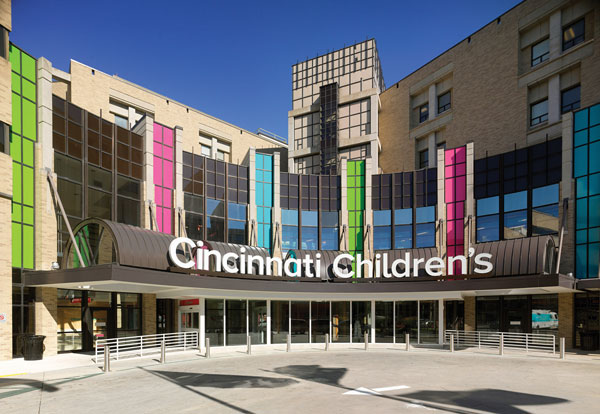CBRE’s U.S. Life Sciences Research Talent 2023 report named not one but two Ohio cities among the top emerging hubs for researchers. Out of the nine clusters ranked, Columbus and Cincinnati, No.1 and No.2, were the only cities included from the same state. Both represent robust research institution networks that have received significant support through National Institutes of Health (NIH) funding, one of the key factors CBRE considered in its assessment.
Columbus
With 50 higher education institutions, the universities and colleges in the Columbus region collectively amassed more than $306 million in NIH funding in 2022. This number has continued to scale over the last year. Columbus-based Ohio State University, the largest university in Ohio, led the entire state in NIH-funded research in 2023, collecting an impressive $252 million.
Ohio State is currently No.11 among all institutions in the nation in research and development expenditures, having spent approximately $1.36 billion in fiscal year 2022, according to the National Science Foundation’s Higher Education Research and Development (HERD) Survey.
It is also among the top 10 universities nationally for biological and biomedical science doctorate completions.
Over the last five years, Central Ohio’s universities and colleges have collectively granted more than 8,700 degrees in biology, biomedical science, chemistry and pharmacy, earning the region its ranking as No. 23 in the nation for graduates with degrees in these fields.
As CBRE states in the report, identifying sources of emerging talent is critical to fueling a growth industry like life sciences. With this pipeline established and continuing to expand, the Columbus region is starting to attract big names to the city as well as the surrounding communities.
New Albany Welcomes Amgen to Ohio
Located 15 miles northeast of Columbus, the city of New Albany is home to the newest location in Amgen’s global operations network. The biotech giant opened its Central Ohio operations in February, 26 months after the initial groundbreaking, the fastest site completion in Amgen’s nearly 45-year history.
Described as Amgen’s “most advanced facility to date,” the plant has been designed to meet environmental sustainability standards that support Amgen’s commitment to achieving carbon neutrality in all its operations by 2027.
“Our new facility, known as Amgen Ohio, was designed with the latest innovation and technology to deliver safe, reliable medicines for ‘every patient, every time,’ ” said Bob Bradway, chairman and CEO at Amgen, in a press release. “As part of Amgen’s global biomanufacturing network, Amgen Ohio will play an important role in helping us address serious disease around the world with our innovative biomedicines.”
Amgen expects to introduce 400 well-paying, full-time jobs through this expansion, representing $40 million in annual payroll. Roles for technicians and engineers, along with quality assurance, quality control, administrative and management positions, have been made available.
In addition to creating jobs, Amgen has announced plans to take a hands-on approach in preparing the local community for the opportunities it has brought to the region. In collaboration with Columbus State Community College, Amgen is hosting an inaugural 18-month manufacturing apprenticeship at the new facility. Through this program, the company aims to expand employment opportunities that do not require a bachelor’s degree.
Columbus State is also a part of the Amgen Biotech Experience (ABE) network, which works with high school teachers to introduce their students to a series of hands-on biotech laboratory exercises. With the funds provided through this collaboration, Columbus State not only helps students develop skills in problem-solving, critical thinking, and foundational and equipment techniques essential to this industry, but it also allows underrepresented student populations to learn about careers in biotechnology and gain access to skill-developing tools early on that would otherwise be inaccessible.
Cincinnati
The emergence of Cincinnati’s life sciences sector should come as no surprise. The Queen City is home to Cincinnati Children’s Hospital, the nation’s No.1 children’s hospital.
According to U.S. News & World Report, Cincinnati Children’s Hospital leads in four pediatric specialty areas: cancer care, diabetes and endocrinology, neonatology and urology. It receives the second-most research and fellowship awards from the NIH among all children’s hospitals and pediatric departments nationally. In 2023, Cincinnati Children’s Hospital received over $169.6 million in NIH funding through 311 awards.

Most recently, the hospital was selected to join the Consortium of Food Allergy Research (CoFAR) as a clinical research center. Previous CoFAR phases have led to important medical breakthroughs such as the development of the first FDA-approved medication for food allergies, omalizumab, also known by the brand name Xolair, which reduces allergic reactions, including anaphylaxis, that may occur with accidental exposure to one or more foods.
In support of its participation, the NIH has awarded Cincinnati Children’s a grant of over $2.6 million to be dispersed in increments of $380,000 annually for seven years, plus additional funding for clinical trials. Through this partnership, Cincinnati Children’s becomes the only NIH-funded clinical research center for food allergy in Ohio, Kentucky and Indiana and one of only 10 centers in the United States.
An Expanding Ecosystem
Only 20 miles outside the city, National Resilience, Inc. (Resilience) seeks to make similar waves in drug innovation by expanding its West Chester manufacturing operations.
The technology-focused biomanufacturing company is investing at least $225 million to increase the site’s drug production capacity. The plans for this project include adding a fourth high-speed fill line and increasing the number of device assembly and packaging suites.
In collaboration with REDI Cincinnati and JobsOhio, Resilience will hire 440 new employees with an annual payroll of nearly $29 million over the next three years. Manufacturing engineering, quality control, IT and management roles are among the vast array of jobs expected to be created. Of those positions, 274 will be direct employees, while 166 will be contracted workers.

“With a job growth rate of 25% over the last five years and 17,000 workers, this announcement further solidifies the Cincinnati region as the center of health innovation coupled with our world-class research universities and medical institutions.”
— Kimm Lauterbach, President and CEO, REDI Cincinnati, on the 440-job, $225 million expansion by National Resilience, Inc.
“Resilience adding more than 400 jobs to the region supports our well-established life sciences industry, spanning nearly 1,100 business locations from startups to homegrown companies,” said Kimm Lauterbach, REDI Cincinnati president and CEO, in a statement. “With a job growth rate of 25% over the last five years and 17,000 workers, this announcement further solidifies the Cincinnati region as the center of health innovation coupled with our world-class research universities and medical institutions.”
The expansion is a part of Resilience’s larger goal to scale its network capacity to over 200 million units by 2025 to meet demand and support new and existing biotech and pharma partners. When the Ohio expansion was announced in December, the company also revealed that it was expanding the production capabilities of its RTP facility in Durham, North Carolina.

